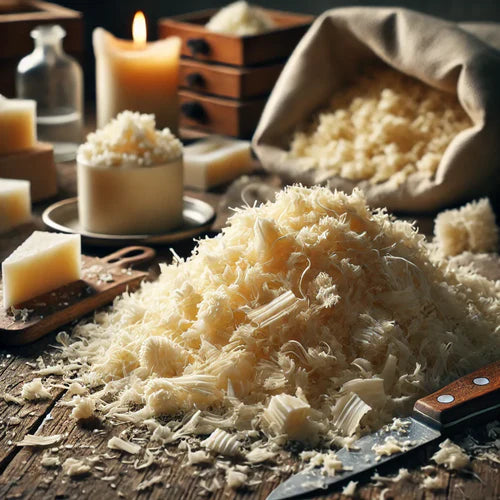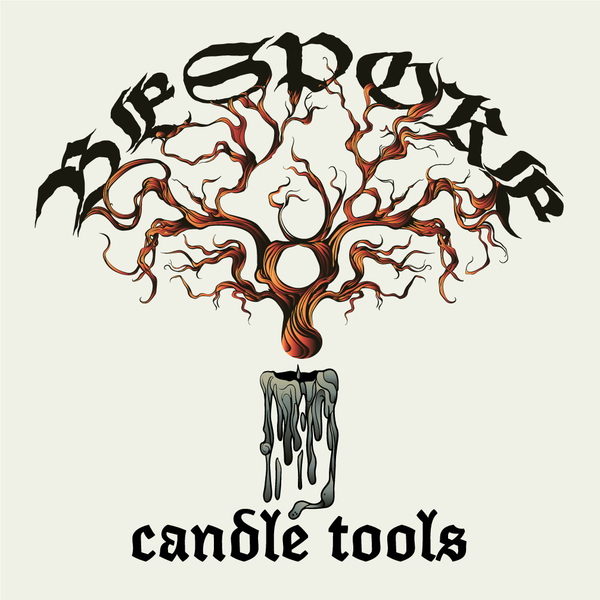
Understanding Wax Types: Paraffin, Soy, Beeswax, Coconut, and More
Understanding Wax Types: Paraffin, Soy, Beeswax, Coconut, and More
If you’ve ever strolled down a candle aisle or browsed online for the perfect DIY candle-making kit, you’ve likely discovered that choosing the right wax can feel a bit overwhelming. From paraffin to soy and beeswax to coconut, each type of wax boasts its own unique characteristics—from scent throw and burn time to environmental impact. Understanding these differences will help you choose the best wax for your next candle-making adventure, ensuring your finished candle not only looks great but also performs beautifully.
In this guide, we’ll break down the most popular wax types on the market, highlight their pros and cons, and offer practical tips for beginner candle makers. By the end, you’ll have a clearer picture of which wax fits best with your personal style and candle-making goals.
Why the Type of Wax Matters
When it comes to making candles, wax choice is more than just a cosmetic decision. The wax you select affects:
- Burn Quality and Duration: Some waxes burn more slowly, giving you longer-lasting candles.
- Scent Throw: This refers to how well your candle’s fragrance disperses throughout the room.
- Appearance: Certain waxes have creamy textures or smooth tops, while others may produce a rustic, natural finish.
- Environmental Impact: If sustainability is a top priority, the wax origin and processing method might influence your decision.
1. Paraffin Wax
What is Paraffin Wax?
Paraffin wax is a byproduct of the petroleum refining process. It’s widely available, cost-effective, and has been the most commonly used candle wax for decades.
Pros of Paraffin Wax:
- Great Scent Throw: Paraffin’s structure holds fragrance well, allowing you to create strongly scented candles.
- Easy to Work With: Its melting points and handling instructions are well-documented, making it a beginner-friendly choice.
- Accessible and Affordable: You can find paraffin wax almost anywhere, often at a lower price point.
Cons of Paraffin Wax:
- Not the Most Eco-Friendly: Because it’s derived from petroleum, paraffin isn’t a renewable resource.
- Potential for Soot: Candles made from paraffin can produce soot if wicks aren’t properly trimmed or chosen.
When to Use Paraffin Wax:
If you’re new to candle making and looking for an affordable, predictable option—especially if you want a strong fragrance—paraffin is a solid starting point.
2. Soy Wax
What is Soy Wax?
Soy wax is produced from the oil of soybeans. It’s a renewable, plant-based wax that has grown immensely popular in recent years.
Pros of Soy Wax:
- Eco-Friendly and Renewable: Derived from a plant source, soy wax has fewer environmental drawbacks.
- Cleaner Burn: Soy wax often produces less soot, resulting in cleaner air quality and a tidier candle jar.
- Longer Burn Times: Pure soy wax candles generally burn slower, extending your candle’s life.
Cons of Soy Wax:
- Subtle Scent Throw: While soy holds fragrance, some users find it less intense than paraffin.
- Frosting and Appearance Issues: Beginners might notice “frosting”—a natural white coating that forms on the surface. Although harmless, it can affect the candle’s look.
When to Use Soy Wax:
If sustainability and a cleaner burn are top priorities, or if you prefer a more subtle, natural feel to your candles, soy wax is a fantastic option. It’s great for gifting candles to friends who appreciate eco-conscious products.
3. Beeswax
What is Beeswax?
Beeswax is a natural wax secreted by honeybees. It’s one of the oldest candle-making waxes and can be used in its pure state without additives.
Pros of Beeswax:
- All-Natural and Chemical-Free: Straight from the hive, beeswax is as natural as it gets.
- Delicate Honey Scent: Unfragranced beeswax has a gentle, sweet aroma that enhances any space.
- Slow, Bright Burn: Beeswax candles typically burn longer and emit a bright, warm glow.
Cons of Beeswax:
- More Expensive: High-quality beeswax often costs more than soy or paraffin.
- Less Fragrance Flexibility: The natural honey scent can compete with added fragrances, making it trickier to achieve strong or complex scents.
When to Use Beeswax:
If you love all-natural products and appreciate a subtle, honey-like aroma, beeswax is a go-to choice. It’s also ideal for those who enjoy supporting local beekeepers and artisanal craftsmanship.
4. Coconut Wax
What is Coconut Wax?
Coconut wax is made from the oil of coconuts. It’s a relatively newer option in the candle-making world, prized for its creamy texture and luxurious appeal.
Pros of Coconut Wax:
- Clean and Slow Burning: Coconut wax burns slowly and evenly, often outlasting other waxes.
- Excellent Scent Throw: This wax can carry fragrances well, offering a balanced, strong scent.
- Smooth Appearance: Candles made with coconut wax often have a smooth, creamy finish that looks professional.
Cons of Coconut Wax:
- Higher Cost and Limited Availability: Coconut wax is less common and tends to be pricier.
- Softer Consistency: Its softness may require blending with other waxes for stability in certain candle types.
When to Use Coconut Wax:
If you want a high-end, luxurious candle that looks and smells amazing—and you’re not afraid to invest a bit more—coconut wax fits the bill. It’s especially perfect for special occasion candles or boutique-level products.
5. Other Natural Blends and Specialty Waxes
Palm Wax:
Palm wax creates beautiful crystallized and feathered patterns. While it’s visually stunning and holds scent well, it raises environmental concerns due to deforestation unless sustainably sourced.
Rapeseed (Canola) Wax:
A European favorite, rapeseed wax is plant-based, has a creamy texture, and offers good scent throw. It’s also known for its stable burn and minimal soot.
Blended Waxes:
Many candle makers experiment with blends—like mixing soy and coconut—to balance cost, fragrance, and appearance. If you’re up for a bit of experimentation, blends can help you achieve the perfect candle characteristics.
How to Choose the Right Wax for You
Think About Your Priorities:
- Scent Strength: Paraffin and coconut waxes often excel.
- Environmental Impact: Soy, beeswax, or certified sustainable palm wax are more eco-friendly.
- Budget Considerations: Paraffin and some soy waxes tend to be more affordable.
- Aesthetic Goals: Coconut wax and palm wax can provide a luxury or decorative appearance.
Start Small and Experiment:
If you’re a beginner, try making small batches of candles with different waxes. Keep notes on how they burn, how they smell, and how they look over time. This hands-on experience will help you find your preferred wax.
Consider Additives and Wicks:
Regardless of the wax you choose, remember that wick size and type, fragrance oils, and dyes all play key roles in candle performance. Test and adjust these variables to get the results you want.
Below is a comparison table summarizing key differences between the main wax types:
| Wax Type | Source | Eco-Friendliness | Scent Throw | Burn Time | Appearance | Cost | Ideal For |
|---|---|---|---|---|---|---|---|
| Paraffin | Petroleum Byproduct | Less Eco-Friendly | Strong Scent Throw | Moderate Burn Time | Smooth, Predictable | Generally Lower | Beginners, strong fragrances, budget-friendly options |
| Soy | Soybean Oil | More Eco-Friendly | Moderate Scent Throw | Slower Burn | May Frost Naturally | Moderate | Natural-minded makers, those wanting cleaner burns and subtle scents |
| Beeswax | Honeybees | Highly Eco-Friendly | Gentle, Natural Aroma | Long Burn Time | Smooth, Golden Hue | Higher | All-natural candle lovers, premium crafts, delicate honey scents |
| Coconut | Coconut Oil | Eco-Friendly (If Sustainably Sourced) | Strong, Balanced Scent | Slow, Even Burn | Creamy, Luxurious | Higher | High-end candles, luxury brands, those preferring premium materials |
| Palm | Palm Oil | Varies by Source (Check Sustainability) | Good Scent Throw | Longer Burn | Unique Crystalline Patterns | Moderate to High | Decorative candles, unique finishes, eco-conscious if sustainably sourced |
| Blends | Mix of Waxes | Depends on Components | Can Be Optimized | Varies by Blend | Customizable Finish | Varies | Experimenters, custom scent/performance seekers, bespoke products |
Final Thoughts
Understanding the differences between paraffin, soy, beeswax, coconut, and other wax options can feel like a crash course in candle chemistry—but it doesn’t have to be intimidating. Each wax type brings its own charm, whether it’s the familiar comfort of paraffin, the eco-friendly allure of soy, the natural warmth of beeswax, or the silky smoothness of coconut.
As you learn, experiment, and grow as a candle maker, you’ll develop a personal preference that aligns with your goals—be it strong fragrance, environmental responsibility, or just a longer, cleaner burn. So go ahead, pick a wax that resonates with you, roll up your sleeves, and enjoy the fragrant journey of making your own candles.
